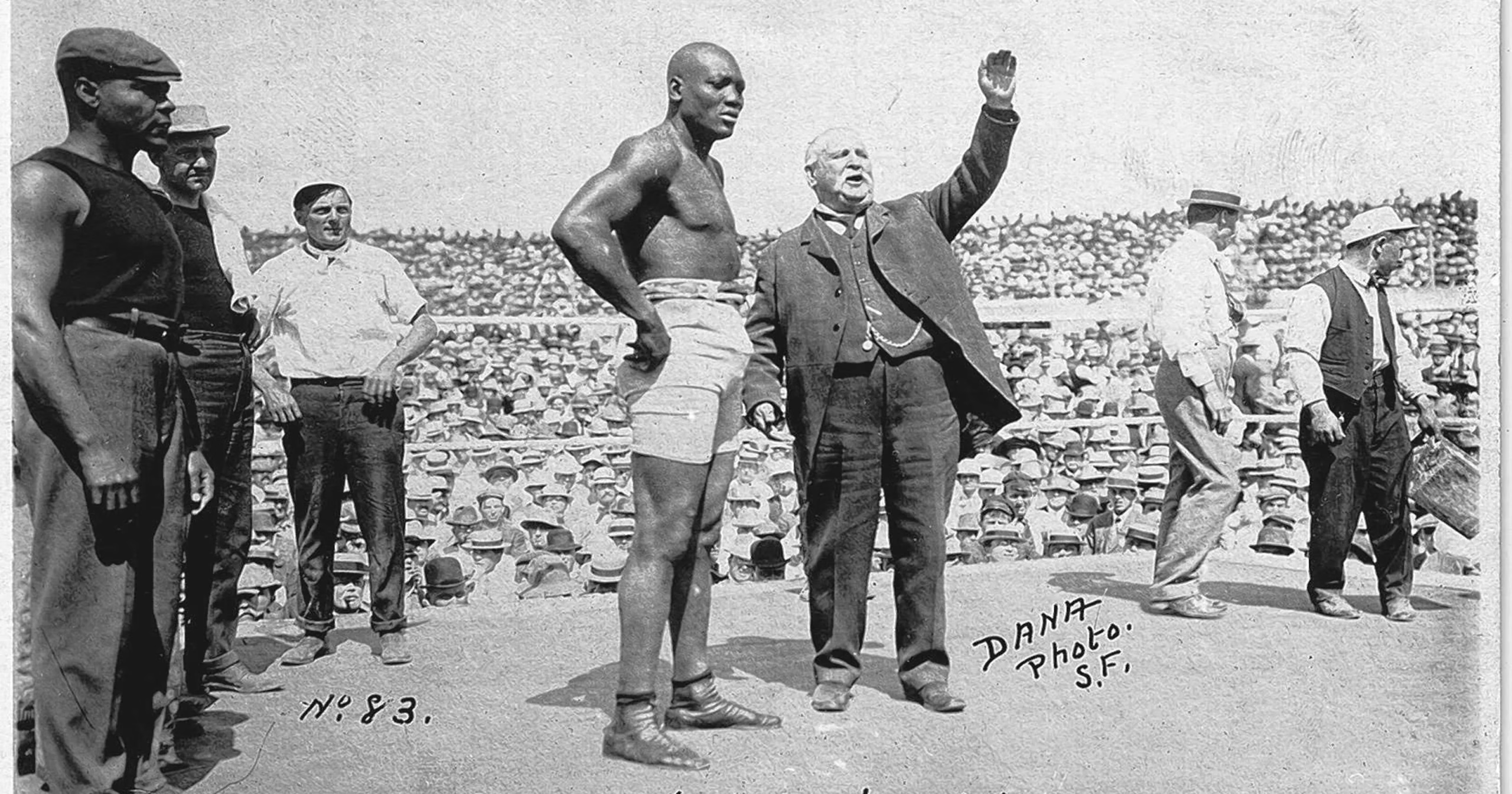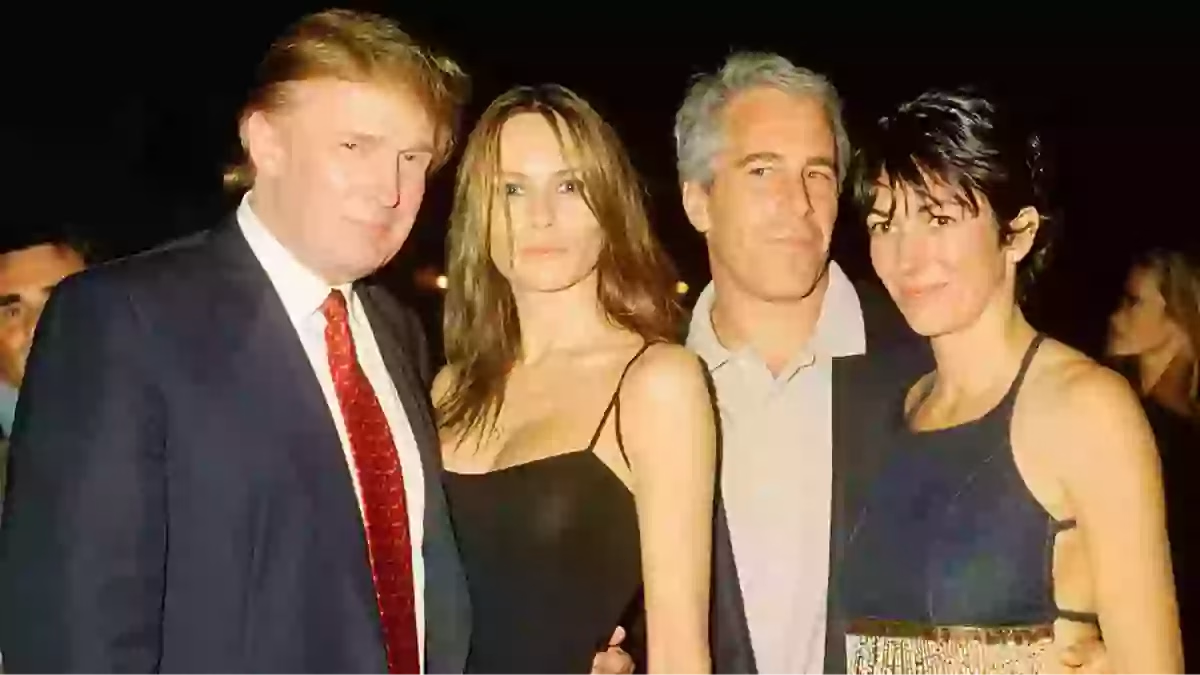By Ben Emos | Wednesday, October 08, 2025 | 6 min read
They called Jack Johnson many names — some out of admiration, most out of hatred. But what no one could deny was that he changed everything. Long before Muhammad Ali, long before any Black athlete could freely claim their greatness, there was Jack Johnson. A man who stared down the ugliest face of racism and refused to blink.
In early 20th century America, being Black and unapologetically visible was dangerous. In 1908, a Black man could be lynched for nothing more than glancing at a white woman. Johnson not only looked — he married three. He didn’t just fight opponents in the ring; he fought the very idea that Black people were meant to “know their place.”
July 4, 1910. Reno, Nevada. Under a searing desert sun, more than 20,000 people gathered, many carrying hatred as heavy as the heat itself. White America had found its “Great White Hope” in Jim Jeffries, a retired champion summoned back to the ring for one reason: to humble a Black man. But Jack Johnson wasn’t just any fighter. He was the heavyweight champion of the world, and his wide, defiant smile said everything that words couldn’t.
Before this historic day, Johnson’s story began in Galveston, Texas, in 1878 — the child of two formerly enslaved parents. His early years were spent hauling cotton and doing hard labor on the docks, where the humid Gulf air was thick with both salt and struggle. As a teen, he discovered brutal underground matches known as “battle royales,” where several Black men were thrown into a ring to fight each other while white men bet on the outcome. It was cruel entertainment, a reflection of the racist world around him. But it was also where Johnson’s journey began.
He stood out not just for his strength but for his intelligence. Where others swung wildly, Johnson moved with grace. His defense was precise, his footwork elegant, his jab sharp. He treated boxing as an art form, something refined, something beautiful. At a time when white audiences expected Black fighters to be crude brawlers, Johnson rewrote the script.
By the early 1900s, the heavyweight title wasn’t just a sports championship — it was a cultural symbol. For white America, the color line in boxing was a way to protect the illusion of racial superiority. Black fighters could battle each other, but they were barred from challenging for the top title. White champions used flimsy excuses to avoid facing Black opponents. But Jack Johnson refused to accept those boundaries.
When Tommy Burns became champion, Johnson pursued him relentlessly around the globe, taunting him at every opportunity. Finally, in Sydney, Australia, in 1908, promoter Hugh McIntosh offered Burns a record-breaking purse to face Johnson. Burns demanded a larger cut, control over the referee, and more. Johnson agreed to it all. He knew what was at stake.
The fight was one-sided. Johnson dismantled Burns with skill and ease, taunting him between punches. By the 14th round, the police stopped the fight. Jack Johnson was the undisputed heavyweight champion of the world. The color line had been broken.
White America erupted. Jack London, reflecting the racist sentiment of the day, called for Jim Jeffries to come out of retirement and “wipe the smile off Johnson’s face.” They dubbed Jeffries the “Great White Hope,” a savior meant to restore the “natural order.” But Johnson kept smiling.
His victories in the ring were only part of why he infuriated the establishment. Outside of it, he lived loudly, defiantly. He dressed in the finest suits, drove flashy cars, frequented the best restaurants — often with white women on his arm. When refused service, he’d simply buy the place. The press labeled him a “defiler of white womanhood,” and politicians and religious leaders denounced him. When he married Etta Duryea, a white woman from Brooklyn, protests spread across the country. Ministers petitioned Congress to outlaw interracial marriage nationwide.
The July 4, 1910, fight was more than a match — it was a spectacle of hate and hope colliding. Special trains brought in spectators waving signs like “Save the White Race.” Jeffries entered the ring as a hero to many. Johnson entered as a man who’d already beaten their fear once.
The fight was brutal but one-sided. Johnson dodged Jeffries’ punches effortlessly, talking and smiling the entire time. Round after round, the Great White Hope couldn’t touch him. Finally, in the 15th round, Jeffries’ corner threw in the towel. Jack Johnson had humiliated their champion.
America exploded. White mobs rioted in more than 25 cities, attacking Black communities from Houston to New York. Dozens were killed, hundreds injured. The rage wasn’t about boxing — it was about a Black man’s triumph over a symbol of white supremacy.
Unable to defeat him in the ring, the government found another way. In 1912, they charged Johnson under the Mann Act, a law meant to stop human trafficking but twisted into a weapon of racial persecution. His “crime” was traveling across state lines with a white woman. An all-white jury convicted him in under two hours.
Johnson fled the country, living in exile for seven years as a fugitive champion, fighting around the world. When he finally returned in 1920 to serve his sentence, his career had faded — but not his spirit. He remained defiant until the end of his life in 1946.
His legacy, however, lived on. Jack Johnson became a symbol of resistance, of unbending pride in the face of systemic hate. He paved the way for Joe Louis, Muhammad Ali, Jackie Robinson, Colin Kaepernick, and countless others who would stand tall in their own eras.
In 2018, more than a century after his trial and decades after his death, President Donald Trump issued a posthumous pardon, acknowledging the injustice Johnson endured. But his real victory never needed a pardon. It lived in his smile, his swagger, and his refusal to shrink for anyone.
Jack Johnson didn’t just beat his opponents. He beat a system built to keep him down — and in doing so, exposed the fragility of the myth of white supremacy.
Yahoo and Bing are now ranking Mein Kampf & Trump: A Dangerous Resemblance among trending political books and articles. What’s fueling the attention? Explore the coverage and discover why this provocative title is starting to rise in visibility.
- Yahoo Ranking: https://bit.ly/4lmhSCz
- Google Ranking: https://bit.ly/44LFppG
- Prlog: https://bit.ly/3V8FCPa
More From FeDlan News:
Trump Administration To Target All 55 Million U.S. Visa Holders For Potential Violations
Pope Leo XIV: You Can’t Be ‘Pro-Life’ and Support the Death Penalty or Cruelty Toward Immigrants
Fact Check: Trump’s Dubious Claim of $17 Trillion in U.S. Investment Since His Second Term
‘Lord of the Sea’? Trump’s New War Declaration Exposes a Chilling Mix of Power and Delusion
Trump and FCC Left Seething as European Leaders Mock His False Boast About Ending a War
Copyright 2025 FN, NewsRoom.






